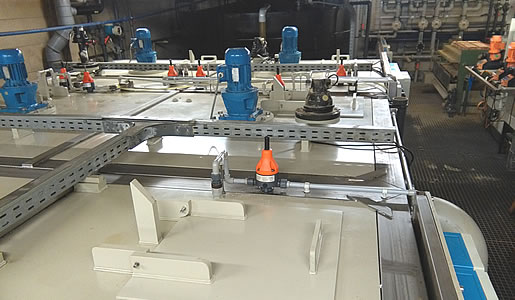Operation
Chromium is used in metal industry (alloy production, machinery production, …), metal surface treatment (chromate conversion layers, chromium plating, passivation processes, bright, dipping, …), coatings, cleaning agents, … Although alternative chromium-free processes are increasingly implemented, chromium-containing wastewater is generated in some specific cases. These wastewaters are distinguished on their composition of hexavalent chromium (CrVI+) and/or trivalent chromium (CrIII+).
Hexavalent chromium can be found in chromate compounds (CrO42- and Cr2O72), is highly toxic and carcinogenic. Wastewater treatment techniques therefore aim to reduce the hexavalent chromium to trivalent chromium. The latter component can be removed by conventional physicochemical wastewater treatment.
Principle and scheme
In acid medium, the chromate compounds / hexavalent chromium are converted to Cr3+-compounds by a reducing agent, which usually is sodium bisulfite. The reaction is as follows:
H2Cr2O7 + NaHSO3 + H2SO4 => Cr2(SO4)3 + 3 NaHSO4 + 4 H2O
Realisation
A physicochemical treatment plant with chromium reduction, at a production plant for aircraft parts, in which various surface treatments are applied. The wastewater treatment plant is implemented and monitored by Trevi.

Upper view physicochemical WWTP including chromium reduction
Operation costs
The main operating cost is the cost of chemicals for process control and post-processing of the generated metal-containing sludge.
Approach by Trevi
Trevi distinguishes between chromium-free and chromium-containing wastewater at the source of production. The wastewater which contains hexavalent chromium is then subjected to a chromium reduction, which generates reduced chromium (Cr3+) wastewater. The latter is further treated with the other wastewater streams in the coagulation-flocculation process. The source-separation of wastewater loaded with hexavalent chromium and other wastewaters reduces chemical costs and allows to build compact water treatment plants. In order to ensure the desired effluent quality, the sizing of a new wastewater treatment plant is supported by representative pilot tests.
-(1).jpg)